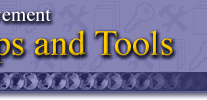|
 |
Organize a team of all the individuals or subcontracted organizations
needed to implement the interventions that appear on the plan from Step
3 of Stage 7 |
 |
A team roster |
 |
|
The first step is to reconfirm the PI team including the PI facilitator and
client organization staff. The “PI facilitator” may be a program manager.
The PI team then identifies and contracts with the necessary professionals to
implement the interventions. The best place to start locating these team members
is with the people who helped develop the interventions. Often, the best team
to implement an intervention is the one that designed it. There are, however,
occasions when developers may not be the ideal implementers. Examples include:
- An instructional designer who is not the best presenter of classroom training
- A scriptwriter who designed the training video but is not a member of the
production company you want to hire to produce the video.
The PI facilitator and client organization staff draw on their knowledge base
of consultants, cooperating agencies and private companies to build the necessary
teams. Donor organizations, such as USAID missions, are useful resources with
their broad view of the technical capabilities of cooperating agencies and local
organizations.
There will be occasions when your immediate team or agency lacks sufficient
expertise or experience to implement an intervention, or when an intervention
clearly falls within another agency’s comparative advantage. In this case,
it is the PI facilitator’s job, with the help of the donor, to gain the
cooperation of other organizations. In addition, the PI facilitator needs to
communicate in exact terms the methods and expected results of the intervention—especially
the performance gaps, the indicators used to measure performance and the expectations
for gap closure. To make sure that all parties have the same expectations, it
is best for representatives from both the cooperating agency and the donor to
sign a memo of understanding specifying all the arrangements and agreements.
|

